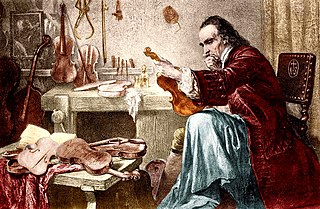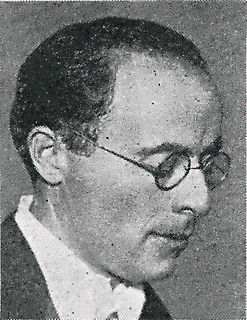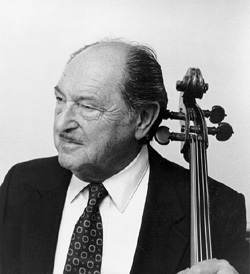Related Research Articles

Antonio Stradivari was a Lombard luthier and a craftsman of string instruments such as violins, cellos, guitars, violas and harps. The Latinized form of his surname, Stradivarius, as well as the colloquial Strad are terms often used to refer to his instruments. It is estimated that Stradivari produced 1,116 instruments, of which 960 were violins. Around 650 instruments survive, including 450 to 512 violins.

A Stradivarius is one of the violins, violas, cellos and other string instruments built by members of the Italian family Stradivari, particularly Antonio Stradivari, during the 17th and 18th centuries.

The Duport Stradivarius is a cello made in 1711 by Italian luthier Antonio Stradivari of Cremona. The instrument is named after Jean-Louis Duport, who played it around 1800.
Steven Isserlis is a British cellist. He is distinguished for his diverse repertoire, distinctive sound deployed with his use of gut strings and command of phrasing.
David Tecchler, sometimes also written Techler, Tekler, Deckler, Dechler, Decler, Teccler or Teckler, (1666–1748) was a German luthier, best known for his cellos and double basses.

The Paganini Quartet was an American string quartet founded by cellist Robert Maas and violinist Henri Temianka in 1946. The quartet drew its name from the fact that all four of its instruments, made by Antonio Stradivari (1644–1737), had once been owned by the great Italian violinist and composer Niccolo Paganini (1782–1840).

Emanuel Feuermann was an internationally celebrated cellist in the first half of the 20th century.
The Otto Booth; Cho-Ming Sin Stradivarius of 1716 is an antique violin fabricated by Italian luthier Antonio Stradivari (1644–1737) of Cremona. The original label of the instrument was "Antonius Stradivarius Cremonensis faciebat Anno 1716". The Booth Stradivarius has a two-piece back and has a body length of 35.4 cm.

Matteo Goffriller (1659–1742) was a Venetian luthier, particularly noted for the quality of his cellos. He was active between 1685–1735 and was he founder of the "Venetian School" of luthiers, during a time when Venice was one of the most important centers of musical activity in the world.
Domenico Montagnana was an Italian master luthier based in Venice, Italy. He is regarded as one of the finest violin and cello makers of his time.
The Du Pré Stradivarius is an antique cello fabricated in 1673 by Italian luthier Antonio Stradivari of Cremona (1644–1737). It has also been known generically as the 1673 Stradivarius, as it is the only cello made by Stradivari in that year.

Aldo Simoes Parisot was a Brazilian-born American cellist and cello teacher. He was first a member of the Juilliard School faculty, and then went on to serve as a music professor at the Yale School of Music for sixty years.

Bernard Greenhouse was an American cellist and one of the founding members of the Beaux Arts Trio.

The Barjansky Stradivarius of c.1690 is an antique cello fabricated by the Italian Cremonese luthier Antonio Stradivari (1644-1737).
The Nippon Music Foundation (NMF) is an organisation under the supervision of the Arts and Culture Promotion Division, Agency for Cultural Affairs, a special body of the Japanese Ministry of Education. Established 3 March 1972, its stated purpose is to develop international networks of music and foster public interest in music.

Camille Thomas is a Franco-Belgian cellist.

Tarisio Auctions is a web-based auction house that specializes in string instruments and bows. Founded in 1999 with locations in New York and London, its online auctions provide a global marketplace for musical instrument sales.
Danjulo Ishizaka is a German cellist and professor at the Hochschule für Musik Carl Maria von Weber Dresden.
The Batta-Piatigorsky Stradivarius is a cello made in Cremona, Italy in 1714 by Antonio Stradivari.
References
- 1 2 "Emanuel Feurmann". The New Yorker. February 17, 2003. Retrieved 2 August 2019.
- ↑ "Famous Strads: the Davydov, the De Munck and the Duport". The Irish Times. January 29, 2008. Retrieved 2 August 2019.
- 1 2 3 4 5 ""Feuermann"". Nippon Music Foundation. Retrieved 2020-04-20.
- ↑ "'De Munck, Feuermann' Stradivarius cello is loaned to Camille Thomas". The Strad. 24 April 2019. Retrieved 19 April 2020.
- ↑ Morreau, Annette (2008). Emanuel Feuermann. ISBN 0300183933 . Retrieved 2 August 2019.